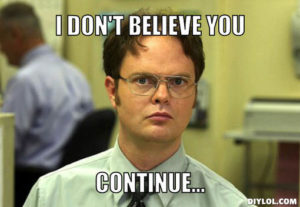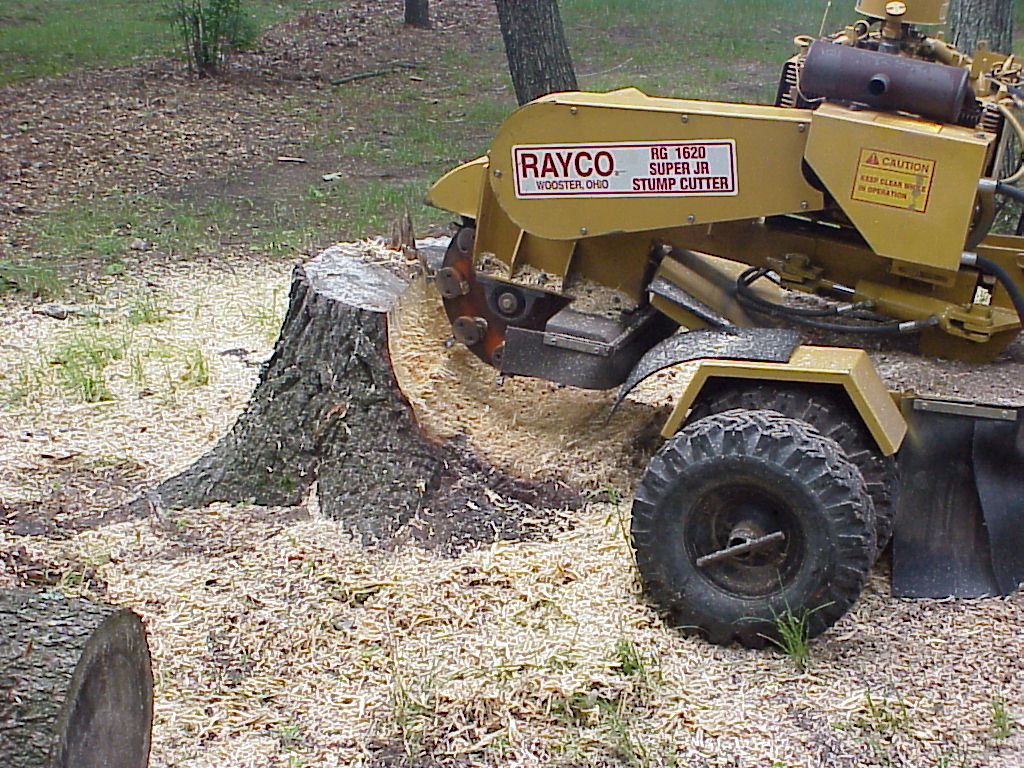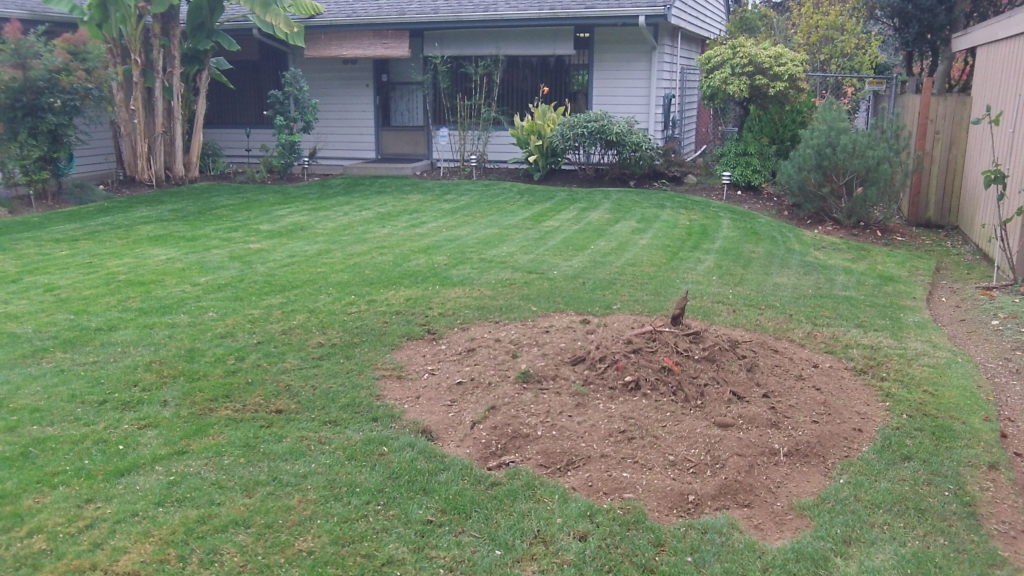Especially after damaging storms, I have people asking me if they can plant a new tree right where the old one used to be. “What did they do with the stump?” I’ll ask, and invariably they’ll tell me “we had them grind it out so it’s all gone.”

Generally speaking, when your tree service grinds a stump, they’re grinding down the large mass right at the base of the tree. More than likely, they’re going down about 12 inches. If it’s a smaller tree stump, that might be enough to get most of it. On bigger trees? You probably now have a polished wooden salad bowl a foot below the surface.
The problems with trees planted over ground stumps
Obviously, having that large mass of wood underneath your new tree is bad. It’s going to prevent your new roots from getting established. It’s also going to create a trap for water, potentially rotting out your new tree.

Stump grinding generally does not include removing all the roots that radiate out from the stump. Since roots can extend past the dripline of the tree, this leaves you with a lot of problem roots that can take years to decompose.
When a stump is ground, a lot of wood chips are created. Wood chips mixed into the soil create an environment that’s about as inhospitable for your new tree as you could get.
The right way to plant where a tree used to be
If budget is an issue, or if we can’t get mechanized equipment into the site, I’ll usually recommend planting your new tree far enough from the old one so it doesn’t conflict with the roots or any stump remnants. If it was a small stump and we’re pretty confident it was gone, we still recommend removing the mix of wood chips and soil from the hole and replacing with fresh, clean topsoil.

In a perfect world, we bring in a machine that can pull what remains of the tree stump. A skid steer works really for removing the large surface roots, and then we can regrade the area and plant. Creating a good planting environment = healthy trees!
Looking for help with your landscape planting project? Contact us today!

That’s good to know that if you have a stump ground down that it will make the area not suitable for another tree. I would think that you could plant a new one nearby though. I’ll have to give that a try if I decide to replace a tree that had its stop ground down.
We bought a house a couple years ago and it looks like someone planted a pine tree inside a hole in a stump of an older tree and the new tree appears to be doing well. Is it too much to assume the new pine tree will continue to do well if the stump continues to decompose as the tree grows?
Maybe? It’s hard to say without a good sense of what was there previously. The biggest concern I would have is anything that might encourage circling roots, or just limit root growth in general. Where I grew up (RI) pine trees were the ones that blew over in bad storms, so the roots are important!
My arborist told me since I am planting a small bare root tree on top of the ground down stump, it should do fine if I do not plant it too deep and have plenty of new dirt on top of the stump. He also recommended using some product called Super Thrive root stimulator before planting. Do you think this will work???? RSVP Gary
hey Gary, it really depends on the stump and how much of it they were able to get rid of. If they used one of the monster grinders that goes 12-18″ deep, and the remains of the stump weren’t left as a bowl to trap water, sure. Otherwise it would really depend on what you were planting, what sort of wood the stump is (pine will break down faster than walnut), that sort of thing. As far as Superthrive, the peer reviewed research I found doesn’t really support its use. I don’t believe it’ll harm anything but I don’t know as I’d spend the money on it.